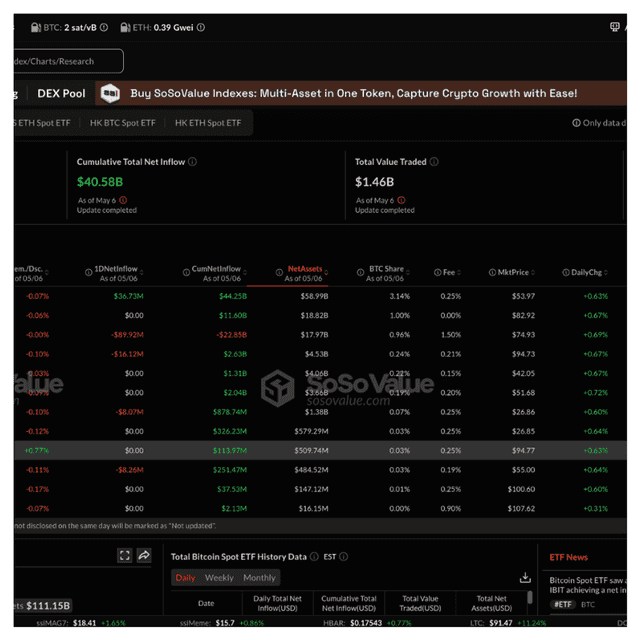2025-05-07 01:01
블록미디어
![[Updated] New York Stock Exchange Adjusts for Second Day as FOMC Decision Looms… Opens Weak](/_next/image?url=https%3A%2F%2Fwww.blockmedia.co.kr%2Fwp-content%2Fuploads%2F2025%2F03%2F%25EB%2589%25B4%25EC%259A%2595_%25EC%259B%2594%25EA%25B0%2580_%25EB%25B0%25B1%25ED%2599%2594%25EC%25A0%2590_%25EC%2586%258C%25EB%25B9%2584%25EC%259E%2590_%25EC%2586%258C%25EB%25B9%2584.jpg%3Fformat%3Dwebp%26width%3D600&w=1200&q=70)
출처: Block Media
# New York Stock Market Extends Decline Amid Trade and Tariff Uncertainty
The three primary indices of the New York Stock Exchange continued their downward trajectory for a second consecutive session as investors grappled with trade uncertainties and awaited significant updates on U.S. monetary policy.
As of 10:30 a.m. Eastern Time on May 6, the Dow Jones Industrial Average dropped 148.90 points, or 0.36%, to 41,069.93. The S&P 500 fell by 23.79 points, or 0.42%, to 5,626.59, while the Nasdaq Composite decreased by 101.90 points, or 0.57%, to 17,742.34.
# Equities Seek Direction Amidst Lack of Clear News
Equity markets floundered for clear direction in the absence of paramount news. Ongoing trade discussions yielded minimal concrete results, though U.S. Treasury Secretary Scott Besant emphasized progress with 17 major nations, except China, during his House Appropriations Committee testimony. Besant suggested imminent trade agreements with key partners might be announced this week.
President Donald Trump reiterated plans to impose specific tariffs on pharmaceuticals within two weeks, a previously mentioned strategy. While anticipated, the precise tariff levels could introduce market volatility, particularly impacting the U.S. pharmaceutical sector.
# Record Trade Deficit Underscores Tariff Effects
March's U.S. trade deficit underscored the economic impact of tariff conditions, soaring to a record $140.5 billion—a significant 14% rise from the previous month, surpassing the market forecast of $137 billion. Analysts attributed this increase to preemptive import orders ahead of expected tariff enactments.
# Sector and Stock Performance: Mixed Industry Results
Sector performance displayed mixed results, with energy, financials, and utilities achieving gains. Utilities led with an over 1% rise. Conversely, healthcare fell by more than 1%, pressured by tariff concerns.
Among the major technology firms—the "Magnificent Seven"—only Amazon secured modest gains, while the other six fell by less than 2% each. Pharmaceutical giant Eli Lilly saw a sharper decline of over 3%, linked to Trump's tariff announcement. Amgen and Pfizer also dipped, by 2.42% and 1.82% respectively.
In contrast, Ford Motor Company surged 4% following first-quarter earnings and revenue surpassing expectations. The automaker reported an earnings per share (EPS) of $0.14 and revenue of $37.42 billion, surprising analysts with its strong performance.
However, defense-focused AI firm Palantir plunged 13% despite robust first-quarter results, as Wall Street analysts expressed concerns over the stock's inflated price earlier this year. Goldman Sachs's Gabriela Borges increased her price target to $90 from $80, signaling a potential downside of over 27% from the previous close.
# Federal Reserve Meeting Garnering Attention; Rate Policy Likely Steady
The Federal Open Market Committee (FOMC) began its two-day session, with market forecasts broadly expecting an interest rate hold. Investors are keenly observing potential commentary from Federal Reserve Chair Jerome Powell during his post-meeting press conference for insights on future monetary policy.
# European Markets Display Mixed Signals
While U.S. equities struggled, European stocks showed mixed results. The Euro Stoxx 50 fell 0.46%, Germany’s DAX index dipped 0.49%, and the U.K.’s FTSE 100 traded slightly positive post-holiday.
# Crude Oil Prices Rebound After Sharp Decline
In commodities, crude oil made a significant recovery from the previous session's sharp losses, driven by bargain hunters. As of 11:10 a.m. Eastern Time, June West Texas Intermediate (WTI) futures rose 4.20% to $59.53 per barrel, while July Brent crude futures increased by 3.85% to $62.55 per barrel, reflecting a global boost in energy demand sentiment.
View original content to download multimedia: https://www.blockmedia.co.kr/archives/902748




